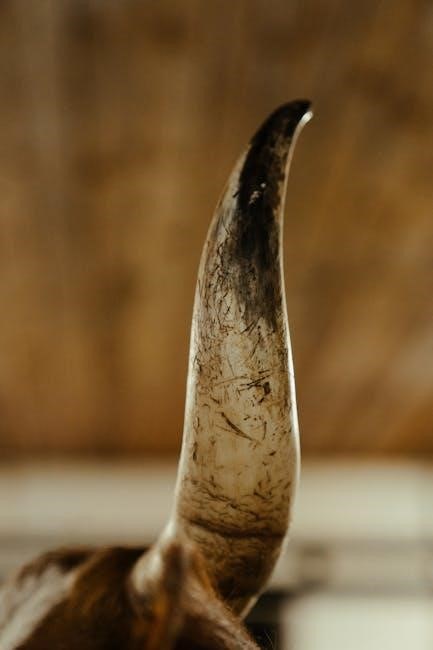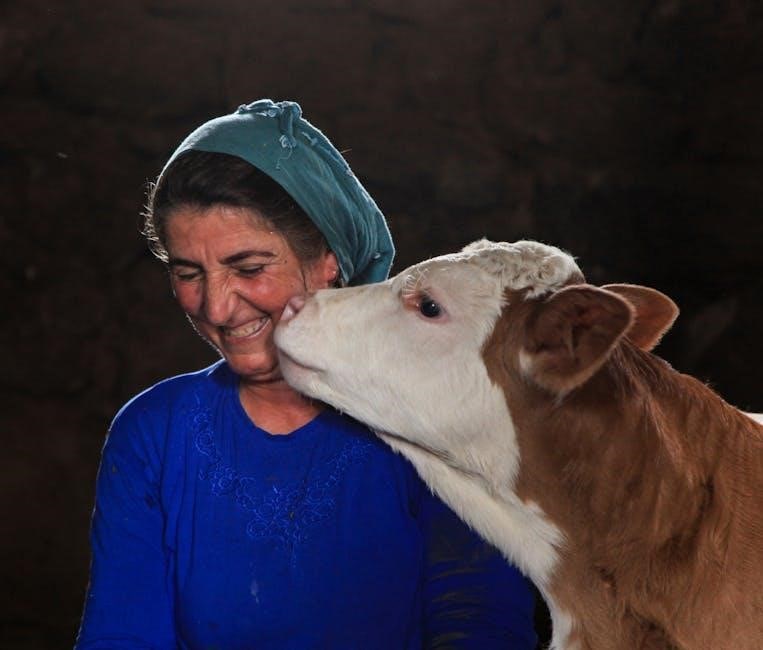Calf stretches are essential for maintaining lower leg flexibility and preventing injuries. They target the gastrocnemius and soleus muscles, improving mobility and reducing muscle tightness. Regular practice enhances athletic performance and overall comfort.
Why Calf Stretches Are Essential
Calf stretches are crucial for improving flexibility, preventing injuries, and enhancing overall lower leg mobility. Tight calf muscles can lead to discomfort, poor posture, and increased risk of strains or tears. Regular stretching helps reduce muscle soreness, especially after physical activity, and promotes better circulation. It also enhances athletic performance by improving range of motion and reducing stiffness. Incorporating calf stretches into daily routines can alleviate tightness and support long-term muscle health. Whether for athletes or individuals with sedentary lifestyles, consistent practice is key to maintaining optimal calf function and preventing common issues like plantar fasciitis or Achilles tendon strain.
Understanding Calf Muscle Anatomy
The calf comprises two primary muscles: the gastrocnemius and the soleus. The gastrocnemius, a larger, two-joint muscle, is located beneath the skin and plays a significant role in knee flexion and ankle movement; The soleus, deeper and smaller, is crucial for ankle plantar flexion and postural stability. Together, they form the Achilles tendon, connecting to the heel bone. Understanding this anatomy helps target specific areas during stretches, ensuring effective muscle engagement and injury prevention. Proper stretching techniques address both muscles, promoting balanced flexibility and strength.
Benefits of Calf Stretching
Calf stretching improves flexibility, prevents injuries, and reduces muscle soreness. Regular practice enhances athletic performance, promotes recovery, and supports overall lower limb health and mobility.
Improving Flexibility and Range of Motion
Regular calf stretching enhances flexibility by lengthening the gastrocnemius and soleus muscles, key to lower leg mobility. Improved range of motion reduces stiffness and tightness, allowing for better movement during activities like running or climbing stairs. Standing and seated stretches, as well as dynamic exercises, target these muscles effectively. Holding stretches for 30 seconds ensures optimal relaxation of the muscle fibers. Increased flexibility also supports proper posture and gait, reducing the risk of imbalances. Over time, consistent stretching improves joint mobility and overall athletic performance. Incorporating calf stretches into daily routines can significantly enhance flexibility and range of motion, benefiting both recreational and competitive athletes.
Preventing Injuries and Reducing Muscle Soreness
Calf stretches are crucial for preventing injuries, particularly in activities involving running, jumping, or quick directional changes. Tight calf muscles can lead to strains or tears, while regular stretching keeps them flexible and strong. Incorporating exercises like standing calf stretches or towel stretches helps reduce the risk of overuse injuries. Additionally, stretching after workouts can alleviate muscle soreness by promoting blood flow and relaxation. Gentle, static stretches held for 30 seconds are ideal for soothing tight muscles. Tools like foam rollers or massage sticks can also enhance recovery. Consistent practice not only prevents injuries but also accelerates healing, making it a cornerstone of any fitness or rehabilitation routine.
Types of Calf Stretches
Calf stretches include standing, seated, and dynamic variations, each targeting the gastrocnemius and soleus muscles to enhance flexibility and reduce tightness for overall lower leg mobility.
Standing Calf Stretches
Standing calf stretches are simple and effective, often performed against a wall for support. They involve leaning forward while keeping the heel on the ground, stretching the gastrocnemius muscle. This stretch is particularly beneficial for runners and individuals with tight calves. Proper technique ensures a gentle stretch without causing discomfort. Holding the stretch for 30 seconds and repeating multiple times daily can significantly improve flexibility and reduce muscle soreness. Incorporating standing calf stretches into a daily routine helps maintain mobility and prevents injuries, making them a fundamental exercise for both athletes and individuals with sedentary lifestyles.
Seated Calf Stretches
Seated calf stretches are a versatile option for targeting both the gastrocnemius and soleus muscles. They can be performed using a towel or strap to enhance the stretch. Sit on the floor with legs extended, loop the towel around the ball of the foot, and gently pull back to feel the stretch in the calf. This method allows for controlled stretching and is ideal for individuals who prefer exercises that can be done without standing. Regular practice improves flexibility and reduces tightness, making it a great addition to both morning and evening routines. Seated stretches are also beneficial for those recovering from injuries, as they provide a low-impact way to maintain muscle health.
Dynamic Calf Stretches
Dynamic calf stretches involve active movements that prepare the muscles for activity while improving flexibility. Examples include leg swings, calf raises, and ankle circles. These exercises are ideal for warm-ups, as they enhance blood flow and reduce stiffness. Perform leg swings by standing and swinging one leg forward and backward, then switching sides. Calf raises involve lifting heels off the ground, holding briefly, and lowering. Ankle circles require rotating the ankle in both directions. Dynamic stretches are highly effective for preventing injuries and enhancing athletic performance. They are also convenient, requiring no equipment and minimal space, making them perfect for incorporating into daily routines or pre-workout sessions.
Tools and Equipment for Calf Stretching
Tools like foam rollers, towels, and The Stick enhance calf stretching by providing leverage and depth, making stretches more effective and versatile for various techniques and needs.
Foam Rollers
Foam rollers are versatile tools for calf stretching and self-myofascial release. By rolling the gastrocnemius and soleus muscles, they help reduce muscle tension and improve circulation. Regular use can alleviate tightness and soreness, making them ideal for post-workout recovery. To use, sit on the floor with the roller under your calves, then slowly roll back and forth, applying gentle pressure. This technique targets knots and kinks, promoting relaxation and flexibility. Foam rollers are portable and easy to incorporate into daily routines, making them a popular choice for athletes and individuals seeking to enhance their stretching practices. They are also cost-effective and durable, providing long-term benefits for calf health.
Towels and Straps
Towels and straps are simple yet effective tools for calf stretching, especially when equipment is unavailable. They allow for controlled, gentle stretches that target the gastrocnemius and soleus muscles. To use, sit on the floor with your legs extended. Loop the towel or strap around the ball of your foot and pull back gently until a stretch is felt in your calf. Hold for 15–30 seconds and repeat on both sides. This method is ideal for deep, static stretches and can be modified to suit different flexibility levels. Towels and straps are lightweight, portable, and cost-effective, making them perfect for home or travel use. They are also great for improving ankle mobility and reducing muscle tightness.
The Stick and Other Rolling Tools
The Stick and other rolling tools are excellent for self-myofascial release, targeting the calf muscles to improve circulation and reduce muscle knots. These tools allow for deep, controlled pressure to release tension in the gastrocnemius and soleus muscles. To use, roll the tool along the back of your lower leg, applying moderate pressure. Focus on areas that feel tight or sore. Rolling tools are particularly beneficial for athletes and individuals with frequent muscle stiffness. They enhance flexibility and can be used before or after workouts to prevent soreness. The Stick is also versatile, enabling users to stretch while seated or standing, making it a practical addition to any calf stretching routine.

Step-by-Step Exercise Guide
This guide provides a comprehensive approach to calf stretching, including standing, seated, and dynamic stretches. Use tools like foam rollers and towels for enhanced flexibility and relief.
Morning Calf Stretching Routine
Begin your day with a gentle morning calf stretching routine to improve flexibility and prevent muscle tightness. Start with a standing calf stretch: face a wall, step one leg back, and press your heel to the ground until a stretch is felt. Hold for 30 seconds and switch legs. Next, perform a seated towel stretch by looping a towel under your foot and pulling your ankle back. Hold for 30 seconds per leg. Conclude with dynamic stretches, such as calf raises, to activate the muscles. Repeat each exercise 2-3 times for optimal results. This routine helps prepare your calves for daily activities and enhances overall lower leg mobility. Consistency is key for long-term benefits.
Evening Calf Stretching Routine
End your day with a soothing evening calf stretching routine to promote relaxation and recovery. Begin with a gentle standing calf stretch against a wall, holding each leg for 30 seconds. Transition to a seated position and use a towel or strap to deepen the stretch, focusing on the gastrocnemius and soleus muscles. Incorporate dynamic stretches, such as slow calf raises, to release tension. For added relief, use a foam roller or The Stick to roll out the calf muscles, enhancing blood flow and reducing stiffness. Perform each exercise 2-3 times to ensure thorough relaxation. Consistency in this evening routine will help alleviate muscle soreness, improve flexibility, and prepare your calves for the next day’s activities.

Creating a Calf Stretching PDF Guide
Design a comprehensive guide with clear instructions and illustrations for each stretch. Include step-by-step routines and benefits, ensuring it’s easy to follow and download for convenience.
Designing the Guide
When creating a calf stretching PDF guide, prioritize clarity and organization. Use clear headings and subheadings to categorize stretches by type, such as standing, seated, or dynamic stretches. Incorporate high-quality images or diagrams to visually demonstrate each exercise, ensuring proper technique is easy to follow. Include step-by-step instructions for each stretch, specifying how long to hold the position and how many repetitions to perform. Consider adding a section for morning and evening routines to encourage consistent practice. Use a clean, professional layout with bullet points and short paragraphs to enhance readability. Ensure the guide is easily downloadable and shareable, making it accessible for users to print or view on mobile devices.
Including Visual Aids
Visual aids are crucial for making your calf stretching guide user-friendly and effective. High-quality images or diagrams of each stretch help users understand proper form and technique. Use arrows to indicate movement directions and highlight key muscle groups being targeted. Videos or GIFs can demonstrate dynamic stretches, providing a clearer understanding of the motion. Illustrations of muscle anatomy, such as the gastrocnemius and soleus, can educate users about the areas being stretched. Ensure visuals are clear and well-labeled, avoiding clutter. Pair each image with a brief description to reinforce the instructions, making the guide both informative and engaging for readers of all fitness levels.
Downloading and Sharing the PDF
Downloading and sharing the calf stretches PDF is a convenient way to access and distribute the guide. Ensure the PDF is high-resolution and includes all visuals and instructions. Users can download it directly from the source website or through a provided link. Once downloaded, the PDF can be easily shared via email, social media, or messaging platforms. Consider adding a QR code for quick access. Sharing the guide promotes healthy practices among friends, family, or clients. Ensure the PDF is printable and mobile-friendly for versatility. This accessibility makes it simple for anyone to adopt a consistent stretching routine, supporting overall fitness and injury prevention goals.

Common Mistakes to Avoid
Avoid overstretching, as it can cause injury. Ensure proper technique for maximum benefit. Neglecting warm-up increases the risk of muscle strain during stretching exercises.
Overstretching
Overstretching can lead to muscle strain or injury, undermining the benefits of calf stretches. It occurs when the muscles are extended beyond their natural range, causing discomfort or pain. To avoid this, listen to your body and stop if you feel sharp pain. Gentle, controlled stretches are more effective than aggressive movements. Holding stretches for 15-30 seconds is ideal, as bouncing or forcing the stretch can damage tissues. Proper technique ensures safety and maximizes flexibility. Always warm up before stretching to prepare the muscles, reducing the risk of overextension. Moderation is key to reaping the rewards of calf stretching without harm.
Improper Technique

Improper technique during calf stretches can lead to ineffective results or even injury. Common mistakes include bouncing, inadequate hold times, or failing to maintain proper posture. For example, bending the knee incorrectly or not keeping the heel grounded can reduce the stretch’s effectiveness. Additionally, using tools like towels or straps improperly can strain other muscles. To avoid this, ensure each stretch is performed slowly and smoothly, holding for 15-30 seconds. Keep the back straight and avoid rounding the shoulders. Always follow guided instructions or demonstrations to maintain proper form. Neglecting these details can lead to poor outcomes or discomfort, making consistent practice less beneficial. Proper technique ensures safety and maximizes the benefits of calf stretching.
Inadequate Warm-Up
Inadequate warm-up is a common mistake that can hinder the effectiveness of calf stretches and increase the risk of injury. Warming up prepares the muscles for stretching by increasing blood flow and flexibility. Without proper warm-up, the calf muscles may remain tight, leading to poor stretch technique or muscle pulls. Even gentle activities like walking or light cardio for 5-10 minutes can make a significant difference. Neglecting warm-up can result in reduced range of motion and potentially cause micro-tears in the muscle fibers. Always prioritize a dynamic warm-up before stretching to ensure the muscles are ready for the exercise. This simple step enhances the safety and effectiveness of calf stretching routines.
Regular calf stretching enhances flexibility, prevents injuries, and supports overall muscle health. Consistency, proper technique, and the use of tools like foam rollers ensure effective results over time.
Summarizing Key Points
Calf stretches are vital for improving flexibility, preventing injuries, and enhancing athletic performance. They target the gastrocnemius and soleus muscles, reducing muscle tightness and promoting better mobility. Using tools like foam rollers or towels can enhance stretching effectiveness. Consistency is key to achieving long-term benefits, such as reduced muscle soreness and improved range of motion. Incorporating calf stretches into daily routines, especially before and after workouts, supports overall lower leg health and functionality. Regular practice ensures optimal results, making calf stretches a simple yet impactful addition to any fitness or rehabilitation plan.
Encouraging Consistent Practice
Consistency is crucial for achieving the full benefits of calf stretches. Regular practice helps maintain flexibility, prevents injuries, and supports muscle recovery. Incorporating calf stretches into daily routines, such as during morning and evening sessions, ensures sustained progress. Tracking progress through PDF guides or mobile apps can motivate adherence. Setting realistic goals, like performing stretches twice daily, makes the habit easier to maintain. Over time, consistent practice becomes a natural part of one’s routine, contributing to overall lower leg health and improving physical performance in activities like walking, running, and sports.

